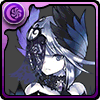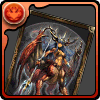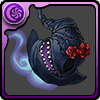The Bizarre History of the GungHo Collab REM
The GungHo Collab REM is one of the weirdest and most inconsistent machines that we’ve ever seen in PAD. This is mainly because, while the REM has been rerun a total of six times within only two years after its debut, it has undergone major shifts with regards to its stone cost, lineup, rates, and ability to monster exchange for its cards on every single rerun it has had. Why is this the case, and how much have these various changes influenced the value of the machine itself? Let’s briefly go through and break down the six different incarnations of the REM that we have had since its debut in 2018, and see what’s changed on each iteration.
Run 1: July/August of 2018 (7/30 – 8/13) – 6 stones
There’s not a lot to discuss here, as the first run of GungHo collab was fairly typical for collabs at the time. The rates on golds were fairly high, considering that a large number of diamond eggs should have served to balance things out a bit, but back in 2018, most collabs had poor rates, with a typical distribution of 12/88 for diamonds and gold eggs respectively. Monster exchange for the various seven star rolls in this event cost five fest exclusives per exchange.
Lineup + Rates:



Run 2: November/December of 2018 (11/28 – 12/10) – 10 stones
As soon as the second run of the GungHo collab, we already see a massive departure from the previous iteration. Instead of the rerun retaining the previous 6 stone collab rem format, the collab was bizarrely combined with a super godfest and did not feature any of the five and six star GungHo collab rolls in the machine at all, only the seven stars. To make matters even worse, the rates of the seven stars did not increase at all in this iteration, staying at only 14% if you didn’t include Dark Reeche
 , despite the higher stone cost than the previous rem. Perhaps the worst part of this, was that you could not trade for any of the seven star rolls this time, meaning you had to whale in the godfest if you wanted another chance at these cards.
, despite the higher stone cost than the previous rem. Perhaps the worst part of this, was that you could not trade for any of the seven star rolls this time, meaning you had to whale in the godfest if you wanted another chance at these cards.
(Personal story: I really wanted Raizer from this godfest, and spent around 7 packs worth of stones chasing him once this machine came to NA. I ended up rolling every single other GungHo seven star beside him… making this perhaps my worst instance of PAD whaling ever, although I did end up finally rolling one on the next run).
Lineup + Rates:

Run 3: March of 2019 (3/15 – 3/25) – 10 stones
The third run of GungHo collab at least stayed consistent with the godfest format, but also kept the amazing idea of not being able to trade for any of the seven star rolls (yay…). This time, however, the six star rolls were at least put back into the machine, giving us better rates for GungHo collab cards, and allowing people to roll for potentially valuable cards like Shust
 and Artemis
and Artemis
 for farming use. This run also introduced us to the idea of dark evolutions for Chrono Magia cards, which would become a staple going forward.
for farming use. This run also introduced us to the idea of dark evolutions for Chrono Magia cards, which would become a staple going forward.
Lineup + Rates:

Run 4: August of 2019 (8/16 – 8/31) – 7 stones
Now, this is where things start to get very bizarre. For the fourth run of GungHo collab, the machine returned to a traditional collab format, meaning that you could once again trade for the seven stars you wanted, and would no longer have to spend 10 stones chasing these cards. For this run, however, all of the old five star rolls were not returned to the rem, and instead, actually became farmable from the GungHo collab dungeon, costing three rainbow tickets each in the monster exchange (be sure to remember this point). This choice, combined with the interesting decision to more than double the amount of seven stars in the rem led to the rates of this iteration being the greatest yet. This run is considered by many to be the peak value of this collab, because almost every card featured had some kind of use, and 7 stones was a very reasonable cost.
Lineup + Rates:



Run 5: December of 2019 (12/16 – 12/30) – 6 stones
Unfortunately, after the GungHo collab had started to increase in value on run 4, the machine came crashing down during run 5. After shifting its style three times previously, the rem suddenly reverted to how it originally was on run 1! This time, the machine got lowered to only cost 6 stones per roll once again, but this came at a great cost. The previously farmable five star rolls were put back into the machine! As if this odd change wasn’t bad enough, there weren’t even any new five or six star rolls to help balance out the rates, or any buffs to most of the previously lacking five star rolls. This iteration did at least give us weapon assists for a couple of the lower rarity cards

 in the rem, but this only leads you to wonder why weapons couldn’t be given to any of the other five stars to help alleviate the pain of rolling them.
in the rem, but this only leads you to wonder why weapons couldn’t be given to any of the other five stars to help alleviate the pain of rolling them.
Lineup + Rates:




Run 6: April/May of 2020 (4/27 – 5/11) – 6 stones
Finally, we have the most recent run of the GungHo collab, run 6. This run is still going on right now in JP, and unfortunately, this run also brought with it several negative changes to the rem. The most notable difference from the previous run is that due to there being so many cards in the Gungho collab now, several cards were cut from the rem altogether.
In total, 6 seven star rolls, and 3 six star rolls are missing, yet for some reason, all of the gold eggs got to stay (who didn’t receive any buffs at all… ouch). As a result of the missing cards, the rates for seven stars decreased during this iteration, making it the first time that a collab rem has seen a decrease or nerf to its rolling rates while maintaining the same stone cost. On the bright side, Dark Reeche finally got a weapon assist
 on this run, so that’s at least something… right?
on this run, so that’s at least something… right?
Lineup + Rates:




Concluding Thoughts
The GungHo collab rem has gone through a rollercoaster of quality, due to the many changes that have occurred to the machine over the past two years. Some of the seven star rolls are cards that i still love to this day such as Noir
 , Raizer
, Raizer
 , and Karin Shindou
, and Karin Shindou
 . Seeing the rem that these cards originate from going through such a massive shift in structure and quality has made me somewhat disappointed, and there are a few final points that I want to mention regarding this machine on the whole:
. Seeing the rem that these cards originate from going through such a massive shift in structure and quality has made me somewhat disappointed, and there are a few final points that I want to mention regarding this machine on the whole:
- The Chrono Magia cards in this event have gotten so much more love and attention compared to the Summons Board cards, it’s kind of absurd at this point. All of the Chrono Magia cards in the rem have weapon assists, and the seven stars even have dark forms that provide them with additional value. By comparison, even after two years now, all of the Summons Board cards have only their base form, and nothing else. Can we please get some kind of evolution for at least the seven stars from Summons Board someday?
- Give Leo, Honoka, Alastair, and Kuroyuri limit break please… it’s been 6 runs of the collab now, and they still have never received it.
- In my opinion, if GungHo is going to allow the 5 stars to remain in the rem, they need to revert the seven star rate to the way it was on run 5, at a minimum. Since almost all of the five star rolls have minimal applications currently, reducing the rates on the top rarity feels kind of weird, considering that something like this has never been done before now.
- I think that GungHo dropped too many new cards into the rem on run 4, which is why the issue of cutting cards has even arisen in the first place. If the 6 different seven stars added in run 4 had simply been spread out more evenly across future runs, we probably could have avoided the issue of the machine becoming too stuffed with new cards all at once.
- Following this point, however, there’s actually still tons of potential cards that could be added to the GungHo rem, especially from Chrono Magia. There are still several unused dark versions of PAD cards besides just Reeche, as well as dark variants of existing cards like Leo Bloomfield, Honoka Shindou, and Durandalf! These dark versions of various cards all look super cool, and I would love to see them come to PAD someday!






I assume that the reason the rem has been able to go through so many structural shifts is that it is owned by GungHo themselves, giving them more control over the event compared to other collabs. It is still my hope that the GungHo collab rem will rise to be of high value once again, but at this point, only time will tell.

